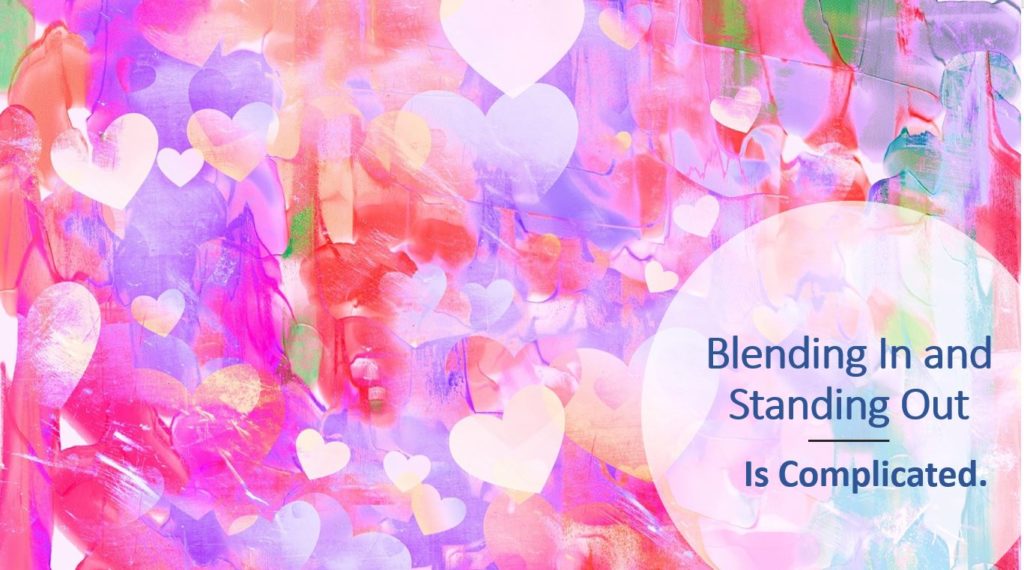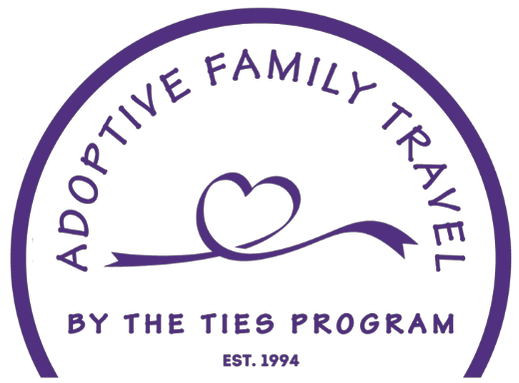
“I dreamed of going back to my birth country just to be able to fit in.”
We hear that a lot.
Given the opportunity on a birth country trip, many adoptees are anxious to walk a few steps ahead or a few steps behind whoever they are traveling with (sorry Mom and Dad!) to see what it feels like to blend in, to be “like everyone else.”
For most, it is the first time in their lives where they’ve had the chance, and the call is often irresistible.
As they seek to blend, adoptees tend to consciously factor in the language issue, sharing (usually afterward), “I thought if I just didn’t talk to anyone, no one would know.” And for short periods of time, that works.
Then, wait a minute, I still stand out?
Despite being in a country where blending feels like an option (and to an extent, it is), many adoptees quickly begin to unpack years of emotion around fitting in, a process that feels essential to healing. Issues of dual identity become front and center.
One piece is of course appearance. Spoiler alert—blending is not all about appearance.
“For most of my life I felt different. I felt that I wasn’t worth as much. It seemed that I could not be more out of place. Even in my family it seemed that way. I felt like I didn’t belong anywhere. Going to my birth country changed that for me. Everyone looked like me and I belonged.” –Ties teenager
For many adoptees, the path to healing is not so clear. In our 25-year-18-country history taking adoptees and their families on this important journey, we’ve heard a continual dialogue on this topic as adoptees seek to work through the feelings of having a foot in two worlds.
One Ties adoptee reflected, “I was amazed that people in my birth country actually do look more like me than the people at home – if only I knew how to speak Chinese.”
Another noted, “I learned that even though I was born in Paraguay, I have not lived there and experienced their culture, so I am therefore not a TRUE Paraguayan.”
Even if an international adoptee can speak the verbal language or appearance is not an issue (think Russia), the struggle to speak the cultural language is ever present. The sense of knowing how things work, the food culture, the family culture, the comedy, music & sports cultures, the what’s-cool-and-what’s-not culture—it’s all there. And then some.
The dual identity conversation we hear on Ties trips sounds like this:
- Are my facial expressions different?
- Did I laugh at something that wasn’t funny?
- Do I dress differently? Wait, it must be my hair!
- Did I use the wrong condiment on the food? What was that we were eating anyway?
- Does anyone have any idea who is singing this song? Crap, why don’t I know that?
- Do I stand differently? Taking a few steps: Do I walk differently?
Subtle nuances. Things that matter when you are trying to find your tribe and make sense of the world and your place in it.
Sound like an uncomfortable reality? It is.
Where struggle takes us
Struggle takes us places, places we often need to go to understand ourselves better, to settle into who we are and get comfortable. The struggle and the healing process are a part of nearly all adoptees’ birth country experience.
I often think how wonderfully supportive it is that during this time, parents, siblings, spouses, grandparents and close friends are in the wings, part of the journey, honoring those they love by giving them the opportunity to explore all parts of themselves.
I love that adoptees travel together on Ties trips, being there for each other and creating community among themselves. “There were a lot of adoptees on my trip and I learned that what I think and feel about my adoption is normal, and I am not alone.” There is really no way to overstate the significance of adoptees traveling with other adoptees on this particular trip.
I love that adoptees are learning about what feels comfortable for them: “I learned to embrace both cultures rather than to try to separate them. I can be happy being adopted and I can have two families, two cultures and two homes.”
I love that the experience has such a high impact: “No matter what I do in life, this will be the number one thing that will always be on top. Nothing is more life changing than going and visiting your birth country. I’ve never experienced such emotion before. I felt things throughout the trip that I never knew were possible. For the first time in my life, I felt complete and at peace with who I am.”
Identity is . . .
Identity is a continuum. Who I am today is not who I will be tomorrow. For tomorrow I will be a culmination of who I have been in all my yesterdays and who I hope to be in my tomorrows.
Birth country travel does not take away sorrow. But it can make it part of yesterday, leaving open the door for hope in the tomorrows.
Next up in this series: My Birth Country is Real and So am I.
Other parts in this Identity Series:
Introduction
Birth Country Travel: Upon Arrival
Language and Birth Country Travel

